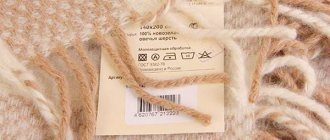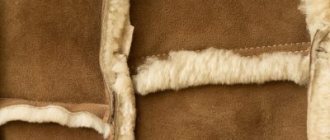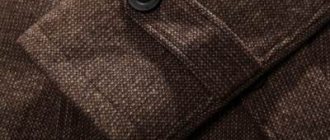Today we will look in detail at how to wash a blanket in a washing machine. Today everyone has such textiles - terry, fleece, plush, wool, microfiber, bamboo and other fabrics. The products are used as a bedspread, an additional blanket, or as decor. They are different - thick, thin, shaggy, smooth, large, small. Sooner or later the time for bath procedures comes. And then housewives are faced with a logical question: is it possible to wash this blanket in a washing machine or will it have to be done manually? Or maybe it’s time to prepare the package for dry cleaning?
We have great news for you - almost any item can be washed without the help of professional services. It’s just that some items are easier to wash, others are more difficult. We will analyze the topic of washing blankets in a washing machine in the most detailed way, give the necessary instructions, and introduce you to important subtleties. If you are ready to test your strength, welcome to our article!
Is it possible to wash a blanket in a washing machine?
To answer whether it is possible or not, you need to consider several factors. The choice of cleaning method depends on the blanket itself and the characteristics of the washing machine.
Bedspreads are made from natural fabrics and synthetics. Each fabric has its own care recommendations. There are three options:
- handwash;
- machine washable;
- dry cleaning
The answer to the first question is yes, you can. Here the second one arises: how to wash a blanket in a washing machine so that it does not spoil?
Each “washing machine” is designed for a certain weight. If the product is too large, it may not be able to pull. Important detail: some fabrics absorb a lot of water and become heavier when wet. You need to focus not on the initial weight, but on the acquired weight. Attempting to force the machine to work under overload can lead to unpleasant consequences, including breakdown.
Selecting a mode for washing a blanket
A modern automatic washing machine can operate in 12–14 modes. Unnecessarily, they usually use only half of the functions.
Cotton/linen
One of the “hottest” and most intense. Washing occurs at a temperature of 90º at a speed of 1000 rpm. Suitable for children's clothes or when seriously soiled. At such a high temperature, things practically boil and sterilize.
Kids clothes
Similar to the previous one in temperature and intensity. To this is added a thorough rinsing. This mode is guaranteed to remove stains, get rid of dust mites and remove residues of washing powder.
Read, it’s useful to know: - How to knit baby blankets with your own hands - patterns and diagrams.
Synthetics
The washing temperature in the mode is much lower - no more than 40º. You can increase it by hand, but not all synthetic fabrics can be washed in hot water. Otherwise called “Mixed Fabrics”, this mode allows you to wash several different fabrics at the same time.
Wool
The more natural the fabric, the more delicate the effect becomes. Therefore, the washing mode for wool does not require either too high a temperature (40º) or high speed (800 rpm). Suitable not only for pure wool, but also for yarn with a small percentage of wool in the composition.
Delicate
Analogous to the previous mode. Another name for this is “Gentle Wash”. Suitable for natural, especially delicate fabrics that require careful care. This category includes silk blouses, ties, fine linens and shawls. Temperature - low, speed - no more than 400 rpm.
Manual mode
Some manufacturers do not separate delicate and manual modes. It is suitable when you need to wash items that cannot withstand regular machine washing. The effect on the fabric is gentle, the number of revolutions per minute is minimal.
Quick wash
The operating algorithm is the same. The entire cycle only takes about 40 minutes. Water temperature is 30–40º. Suitable for lightly soiled items or underwear.
Daily wash
In this mode, they wash things that have not gotten very dirty. The drum does not fill completely. One of the most economical modes in terms of time and energy consumption. Washing takes about 50 minutes, the water temperature does not exceed 30º.
Intensive wash
It is used when the dirt is so strong that it cannot be washed normally. Suitable only for linen or cotton, contraindicated for delicate fabrics. Water temperature is 90–95º.
Prewash
This mode is turned on when the item is heavily soiled. Essentially, this is a pre-soak before the main wash. Temperature is low.
Soak
Almost no different from the previous mode. Very dirty items are soaked and prepared for the main wash at a temperature of about 30º.
Night wash
Normal washing, but in silence. During the process, no mechanism is activated that creates noise. The wash completion signal does not work.
Modes for economical use of resources
Special modes that consume less electricity and water. Washing takes less time. In some cases - up to half an hour.
Intelligent programs
Some washing machines are called “smart”. They can control the formation of foam, protect against leaks, refresh waterproof fabrics, distribute things evenly in the drum, etc.
So how to wash a blanket in a machine? The mode is selected depending on the fabric. The required information is indicated on the label.
Viscose and microfiber material
Viscose blankets may shrink, but are soft, durable and practical
A microfiber blanket can be washed in the same way as blankets made from other materials, but cannot be dried in radiators or in the sun.
- Place the machine in the drum of the machine. Set the mode to “delicate”.
- The temperature should not exceed 30 degrees, otherwise it will settle and change shape and size.
Washing the blanket should be done in cool water - 3 degrees - Add liquid powder.
To wash the blanket we use liquid gel - Set the spin speed to no more than 800-100 rpm.
- Hang in a place out of reach of sunlight.
The method described above is suitable for hand washing, as well as for polyester and acrylic. The only difference for microfiber is that you do not need to use rinses and conditioners. The latter can damage the fabric structure.
What should the water temperature be when washing the product?
Blankets should not be washed in very hot water. The optimal temperature is from 30 to 40º. The exact numbers for a particular item depend on the fabric and its properties. The more tender it is, the cooler the temperature should be.
Cotton, polyester, micromodal and other synthetics can withstand 40º, but wool and silk are washed only at 30º with great care. If the fabric of the blanket is mixed, it is washed at a low temperature, taking into account the properties of the fibers included in the composition.
Failure to comply with the temperature conditions can lead to deformation and shrinkage of the product. If it is heavily soiled, cold water will not work - stains may remain on the blanket. It is better to choose another removal method.
Keep in mind! Some sources indicate a permissible temperature of 60º, but it is better not to wash in water hotter than 40º.
Bonus tips:
- It is better to wash a blanket in the summer, in hot weather. The product will dry faster, which makes washing much more hygienic. Why? A large, fluffy blanket absorbs a huge amount of moisture. A humid environment, especially a dark one (direct sunlight for drying natural materials is contraindicated) is excellent for the growth of bacteria. When washing, we pursue the opposite goals: to make the blanket cleaner and safer.
- If it so happens that you don’t have a special detergent on hand, baby shampoo will do the job very well.
- There are small exceptions to the above cleaning and washing rules, which depend on the material from which the product is made. For example, some strict conditions can be relaxed in the case of synthetic fibers (polyester is the most common). Of course, if you are very concerned about the durability of the product, you can follow our universal instructions - it definitely won’t get any worse. But synthetics are not so strict and whimsical: their washing temperature can reach 60°, and such fabric can be dried on a line. Fleece products also stand out: this fabric does not absorb dirt, so you can simply shake the blanket to get rid of debris without having to do any serious cleaning before washing.
- An unusual way to clean a blanket: use a sticky roller, which you usually use to clean pet hair from clothes, it will pick up some of the debris. Of course, this procedure will not replace a full wash, but it is faster and easier. If you go over the blanket with a roller from time to time, your pet's hair, small debris, and crumbs will not accumulate in it. This will make your relationship with him more pleasant and gentle, and the process of thorough cleaning easier. Also, this approach will delay the “moment-X” - washing.
How to machine wash: a guide
In order to wash a blanket in a washing machine, you need to follow the standard algorithm of actions:
- Check the blanket for damage and stains. Remove damage and treat stains with a special product.
- Place in drum.
- Select the desired program at a temperature not exceeding the recommended numbers.
- If possible, select the minimum number of revolutions.
- Use double rinse.
- Do not use the spin function.
- Do not use the drying function.
Important! It is better to wash the blanket separately, without powder, using a liquid detergent.
Features of washing different bedspreads
Fleece
Fleece is synthetic, so the product requires careful handling. Wash fleece blankets in water at a temperature not exceeding 40º with a liquid product that does not contain chlorine. Spin cannot be used. As a last resort - minimal.
Plush
Plush is a popular upholstery material for furniture and toys. Plush blankets can be washed either by hand or in the washing machine on a delicate cycle. Water temperature - no more than 30º, number of revolutions - no more than 400.
Woolen
Wool is a material that requires special attention. It is capable of absorbing large amounts of moisture. Therefore, the weight of a wool blanket increases significantly during washing. It is worth paying attention to the capabilities of the washing machine in advance. A machine with a load of less than 4.5 kg is not suitable for a wool blanket.
Wool does not tolerate high temperatures, so it is better to wash items made from it at a temperature of about 30º. Spinning is not recommended.
Plaid "grass"
This variety is particularly soft. They are two-layer. The first layer is soft microfiber, and the second is fluffy. One of the features is the pile, the length of which reaches 3 cm.
For some models of this type, machine washing is not recommended. If possible, it is done in a delicate mode, at a temperature of no more than 30º with a chlorine-free product. Spinning is not recommended.
Important! Before washing, items with long pile are either shaken out or cleaned with a vacuum cleaner.
Principles of cleaning
Before sending a blanket or blanket for washing, carefully inspect the product. It is recommended to immediately remove major contaminants:
- A sticky roller will help get rid of cat hair and the hair of other animals;
- A solvent will help remove nail polish that accidentally gets on the bedspread, but first test its effect on an inconspicuous area of the material. You won't be able to remove the varnish with detergents. If the fabric cannot withstand the solvent, take the item to the dry cleaner.
- Before machine washing, remove food stains with a stain remover or hand wash the affected areas. If the stain is definitely not of protein origin, hot steam will help get rid of it.
If you don’t know how to clean a blanket or bedspread and are afraid of ruining it, you should turn to dry cleaning services. A voluminous blanket or large bedspread that does not fit into a home washing machine can be taken to the laundry room, where there are automatic machines with capacious drums.
How to dry a blanket after washing
It is not recommended to dry blankets vertically, especially while water is draining. They are dried in a horizontal position outdoors in dry weather, without contact with direct sun. This is done to avoid product deformation. This applies to both natural fabrics and synthetics. For example, fleece wrinkles easily, so when drying on a line, a crease may appear at the fold.
It is better to keep the drying blanket away from radiators and heaters and let it dry on its own.











